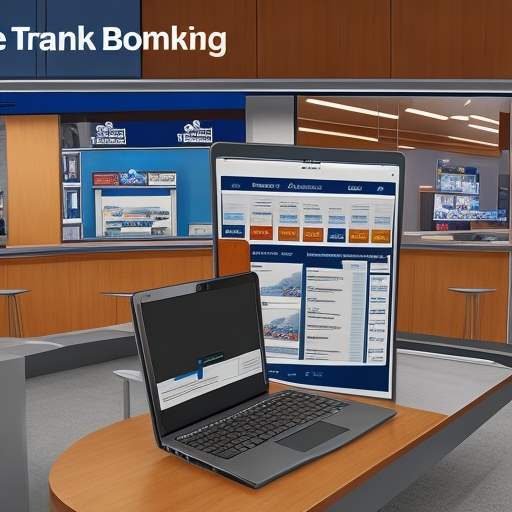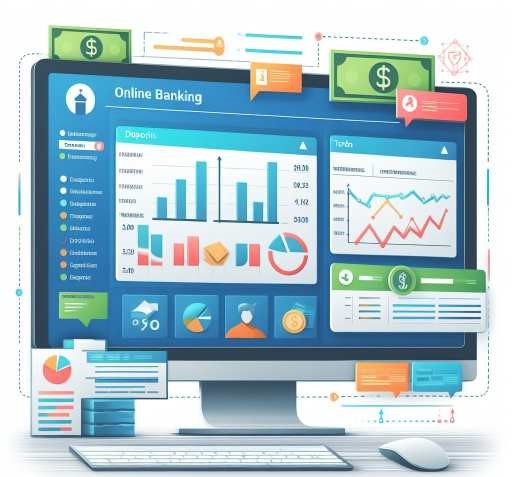Online Bank transactions are a result of intricate technical processes that seamlessly move money between accounts. Behind the scenes, these operations involve sophisticated systems and technologies. In this blog, we’ll take a detailed look at the technical aspects of bank transactions, unraveling the complex online bank mechanisms that make these transactions possible.
Table of Contents

What is an Online Transection
“An online transaction, also known as an e-transaction or electronic transaction, refers to the buying or selling of goods and services using the internet as the medium for exchange.”
Account Infrastructure
- Database Architecture: Bank transactions rely on robust database systems that store account information securely. These databases are structured to handle vast amounts of data efficiently.
- Account Numbering: Each account is assigned a unique identifier, often in the form of an account number. This ensures precise tracking and easy retrieval of account information during transactions.

Transaction Processing
- Core Banking Systems: Banks operate on core banking systems, centralized platforms that manage various banking functions, including transaction processing. These systems ensure real-time updates and synchronization across different banking channels.
- Transaction Codes: Every online bank transaction is associated with a specific code, allowing the banking system to identify the type of transaction (e.g., deposit, withdrawal, transfer) and process it accordingly with using some functions.
Communication Protocols of online Bank transections:
- Secure Sockets Layer (SSL) Encryption: To secure communication between the user’s device and the bank’s servers, SSL encryption is employed. This ensures that sensitive information, such as login credentials and transaction details, remains confidential.
- Application Programming Interfaces (APIs): Banks use APIs to enable seamless communication between different systems. This is crucial for integrating third-party services, facilitating online transactions, and ensuring a smooth user experience.
Authorization and Authentication
- Two-Factor Authentication (2FA): Banks implement 2FA to enhance security. This often involves a combination of something the user knows (password) and something the user has (e.g., a mobile device for receiving authentication codes).
- Biometric Verification: Some banks employ biometric authentication methods, such as fingerprint or facial recognition, to further enhance security during transactions.
Clearing and Settlement
- Automated Clearing House (ACH) Systems: For electronic transactions, ACH systems facilitate the clearing and settlement process. These systems automate the transfer of funds between accounts, ensuring accuracy and efficiency.
- Real-Time Gross Settlement (RTGS): For high-value or time-sensitive transactions, RTGS systems provide instantaneous settlement, reducing online transaction times significantly.
Record Keeping and Audit Trails
Online Transaction Logs: Comprehensive logs are maintained for every transaction, detailing the time, date, amount, and involved accounts. These logs serve as an audit trail for regulatory compliance and dispute resolution.
Security Measures
- Fraud Detection Systems: Banks deploy advanced algorithms and machine learning models to detect unusual patterns or potential fraud in real-time, providing an additional layer of security.
- Firewalls and Intrusion Detection Systems (IDS): These systems protect against unauthorized access, ensuring the integrity and confidentiality of sensitive banking information.
The Online technical workings of bank transactions involve a sophisticated interplay of databases, communication protocols, authentication methods, and security measures. Understanding these technical aspects not only demystifies the process but also underscores the importance of robust technological infrastructures in ensuring the efficiency and security of financial transactions.

Pros of Online Bank Transactions
- Convenience:
- Digital Access: Bank transactions can be conducted conveniently through online banking platforms and mobile applications, providing users with 24/7 access to their accounts.
- Efficiency:
- Real-time Processing: Many bank transactions are processed in real-time or with minimal delay, allowing for swift and efficient movement of funds between accounts.
- Security:
- Encryption and Authentication: Advanced security measures, including encryption, two-factor authentication, and biometric verification, contribute to a secure environment, protecting users from unauthorized access and fraud.
- Record Keeping:
- Transaction Logs: Banks maintain detailed transaction records, providing users with a comprehensive account history. This aids in financial tracking, budgeting, and dispute resolution.
- Global Transactions:
- International Transfers: Banks facilitate international transactions through services like wire transfers and foreign exchange, promoting global financial connectivity.
- Automation:
- Direct Debits and Standing Orders: Automated payment options, such as direct debits and standing orders, simplify regular bill payments, reducing the need for manual intervention.

Cons of Online Bank Transactions
- Transaction Fees:
- Costs: Some bank transactions may incur fees, particularly for certain types of transfers, international transactions, or expedited services. These fees can accumulate, impacting the overall cost for users.
- Technical Glitches:
- System Downtime: Technical issues, maintenance, or system downtimes can disrupt online banking services, temporarily limiting users’ ability to perform transactions.
- Dependency on Technology:
- Tech Requirements: Bank transactions heavily rely on technology, and users must have access to compatible devices and a stable internet connection. This dependency can be a limitation for individuals in areas with poor connectivity.
- Security Concerns:
- Cybersecurity Risks: Despite advanced security measures, the risk of cyberattacks remains. Phishing, malware, and other cyber threats can compromise sensitive information and lead to unauthorized transactions.
- Transaction Reversals:
- Limited Reversibility: Once certain transactions are initiated, they may have limited reversibility. In cases of errors or fraudulent activities, resolving issues and recovering funds can be a lengthy process.
- Regulatory Compliance:
- Regulatory Complexity: Banking transactions are subject to various regulations, and compliance can be complex. Changes in regulations may impact the ease with which certain transactions can be conducted.
- Inequality of Access:
- Digital Divide: Not everyone has equal access to digital banking services, leading to a digital divide. This can exclude certain demographics from the benefits of convenient and efficient online transactions.
For more knowledgeable content click here-> Read New





